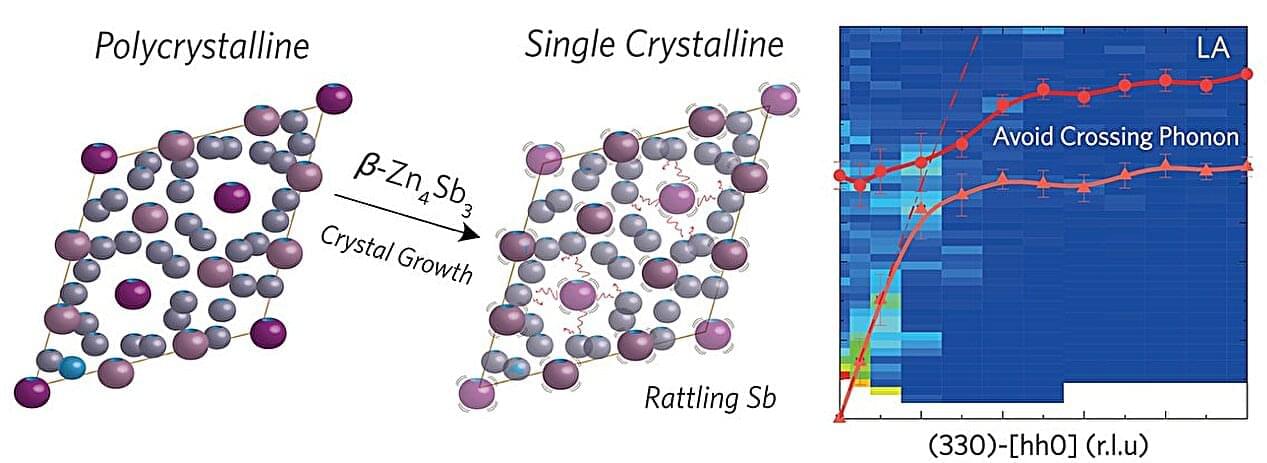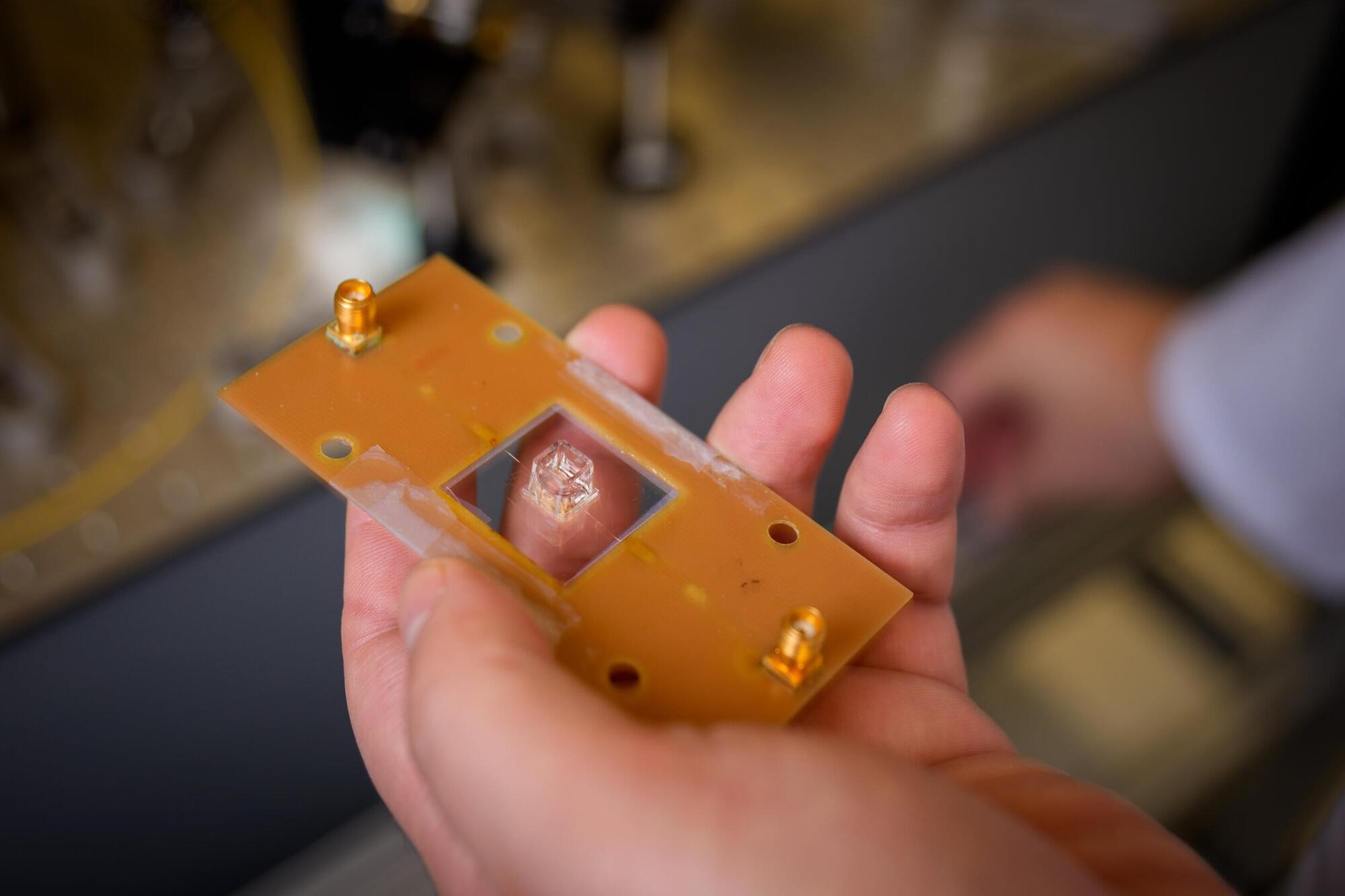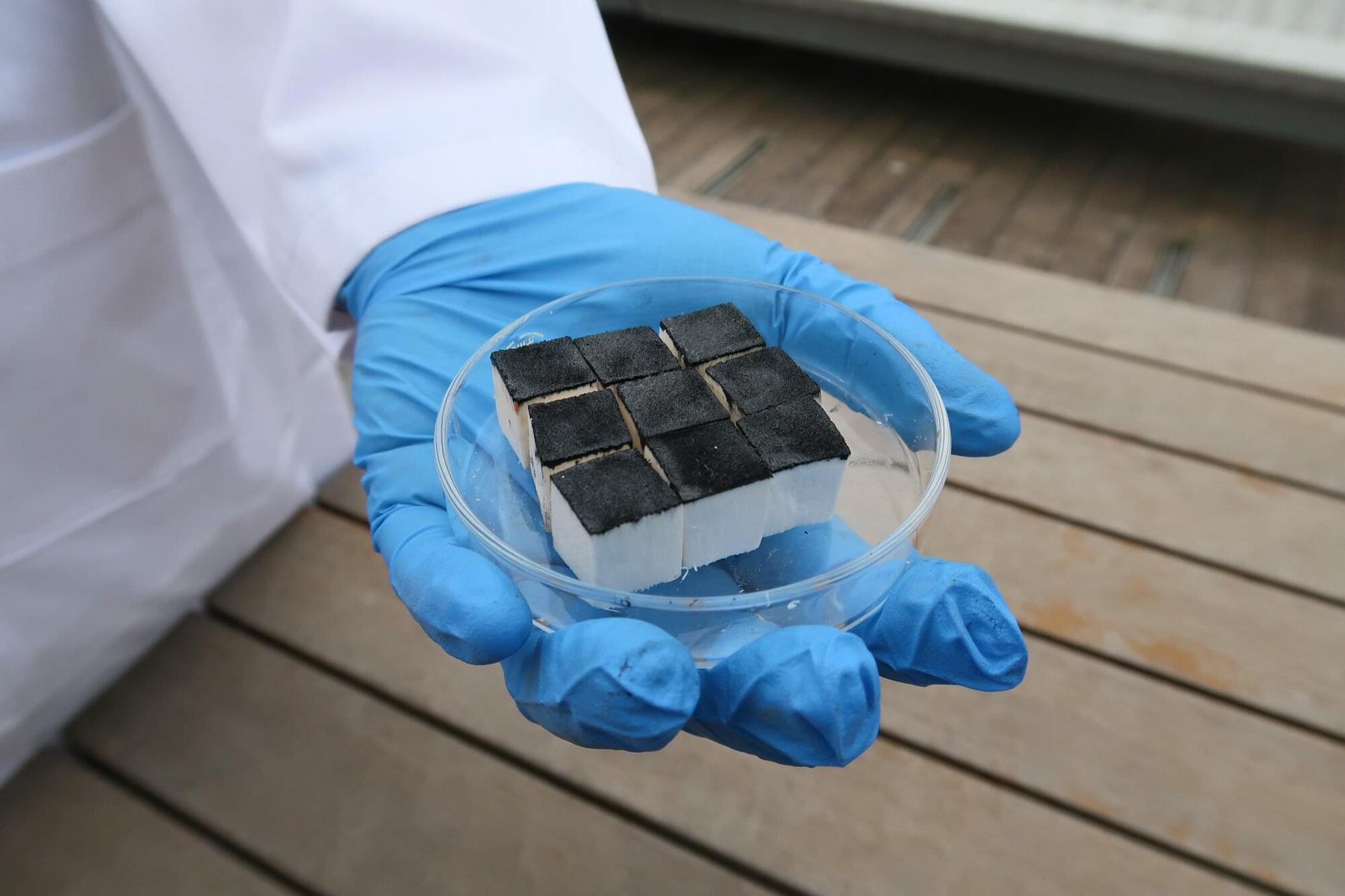A research team has discovered how to make a promising energy-harvesting material much more efficient—without relying on rare or expensive elements. The material, called β-Zn4Sb3, is a tellurium-free thermoelectric compound that can convert waste heat into electricity.
In their study published in Advanced Science, scientists used advanced neutron scattering techniques to peek inside the crystal and found something surprising: tiny heat vibrations (called phonons) were being disrupted by “rattling” atoms inside the structure. This phenomenon, known as phonon avoided crossing, dramatically slowed down how heat travels through the material.
Thanks to this effect, the material’s thermal conductivity dropped to extremely low levels—great news for thermoelectric performance. Even better, the researchers found that the single-crystal version of this material also conducts electricity better than its polycrystalline counterpart, reaching a high power conversion efficiency of 1.4%.








